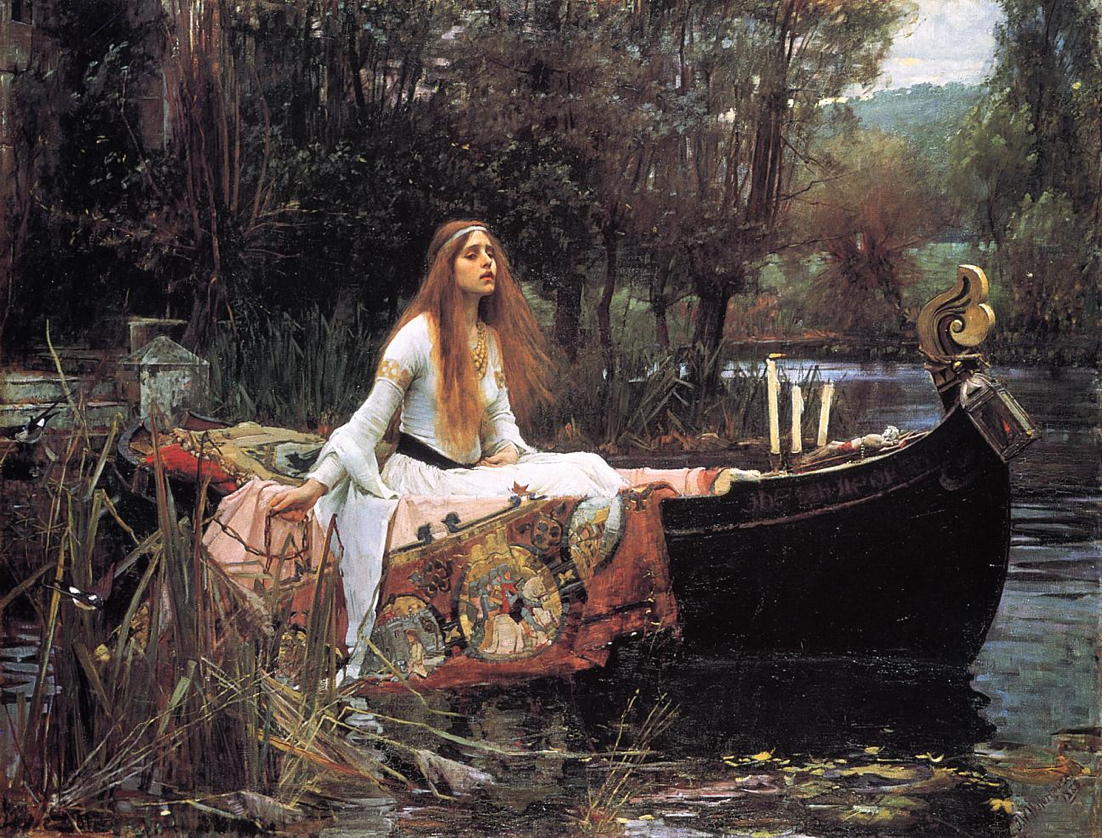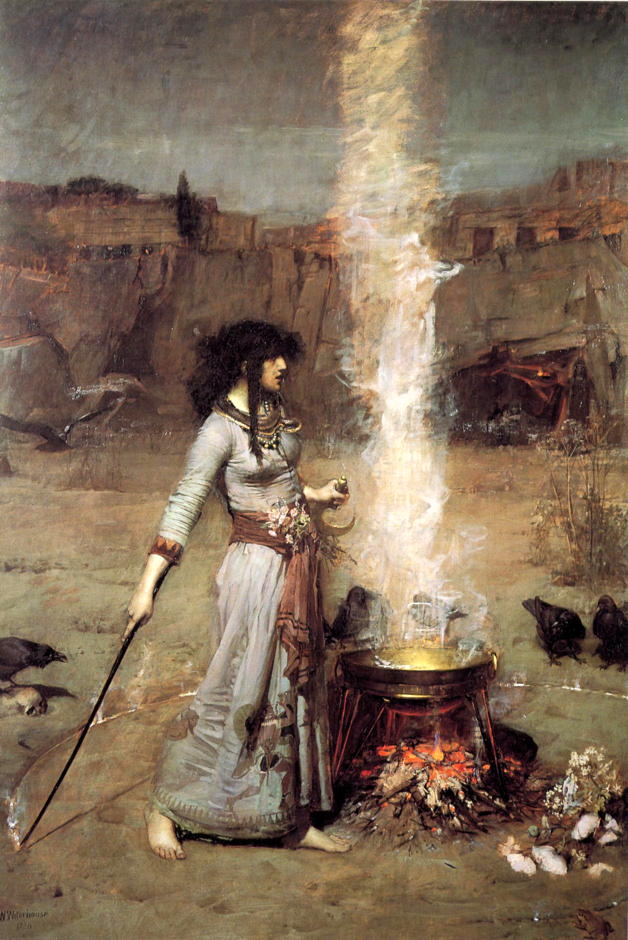The Pre-Raphaelite fantasies of John William Waterhouse
The Pre-Raphaelite movement is a gold mine for amazing fantasy artwork. Among the best was English painter John William Waterhouse. I use his work extensively in the Adventure Guide’s Handbook, and while I didn’t use the actual painting (yet), his The Lady of Shalott was the reason I used that poem in The House of Lisport. It’s just such an amazing piece of fantasy, the magical or fairy lady with knight-encrusted blankets and three candles lighting her waybill a prone crucifix… in fact it’s so amazing I just took out Waterhouse’s also-amazing Circe Invidiosa and replaced it with the Lady.
He created great paintings of rituals, from Circe Invidiosa with her preparing to turn Scylla into a hideous monster, to his Danaides pouring from three vases into a water-bearded cauldron, to, the most amazing in my view, his Magic Circle which is, precisely, a fantasy ritual, with burning incense, a magic staff, a magic circle, and a moon-shaped sickle. The sorceress has even attracted some ravens or crows to assist her!
Another favorite of mine is The Tempest, with the daughter of the sorceror Prospero sitting on the shoreline in a storm, watching what looks to be yet another ship dashed against the rocks by wind and wave. She’s worried mostly about her hair. I know that’s not the way the Shakespeare play goes, but it certainly looks that way in the painting.
Unlike the rest of the painters in this series, Waterhouse painted into the 20th century—which may have helped provide him his best subjects. In addition to painting from Dante and Shakespeare, he also had at his disposal the inspiring poetry of Alfred Tennyson, who died in 1892.
- The Adventure Guide’s Handbook
- Weave fantasy stories around characters that you and your friends create. As a Gods & Monsters Adventure Guide you will present a fantastic world to your players’ characters: all of its great cities, lost ruins, deep forests, and horrendous creatures.
- The House of Lisport
- A brutal family murder left Lisport Manor empty and the town of Lisport undefended in the great war. Today the last holding of the Earl of Lisport is Lisport House, an inn in the bustling and dangerous gambling town of Fork.
- John William Waterhouse at Wikipedia
- “John William Waterhouse (born between January and April 1849; died 10 February 1917) was an English painter known for working in the Pre-Raphaelite style.”
- John William Waterhouse at Wikimedia Commons
- “John William Waterhouse: (1849-1917) Pre-Raphaelite painter particularly known for his depiction of classical subjects and of characters and themes from classical literature and poetry, particularly from the works of Dante Alighieri, Tennyson and Shakespeare.”
- The Lady of Shalott at Wikipedia
- “The Lady of Shalott is an 1888 oil-on-canvas painting… a representation of a scene from Alfred, Lord Tennyson’s 1832 poem of the same name, in which the poet describes the plight of a young woman, loosely based on the figure of Elaine of Astolat from medieval Arthurian legend, who yearned with an unrequited love for the knight Sir Lancelot, isolated under an undisclosed curse in a tower near King Arthur’s Camelot. ”
More Inspirational fantasy art
- Inspirational art: Caspar David Friedrich
- There have been many great painters of fantasy art. For me, Caspar David Friedrich really captures the sense of adventure and wonder that makes for great fantasy games.
- Ethereal engravings of William Miller
- Scottish engraver William Miller created engravings of other-worldly beauty from other people’s art.
- The Biblical and other engravings of Gustave Doré
- Gustave Doré is probably best known for his Bible engravings, especially an angry Moses lifting high the ten commandments to destroy them.
More paintings
- Inspirational art: Caspar David Friedrich
- There have been many great painters of fantasy art. For me, Caspar David Friedrich really captures the sense of adventure and wonder that makes for great fantasy games.



